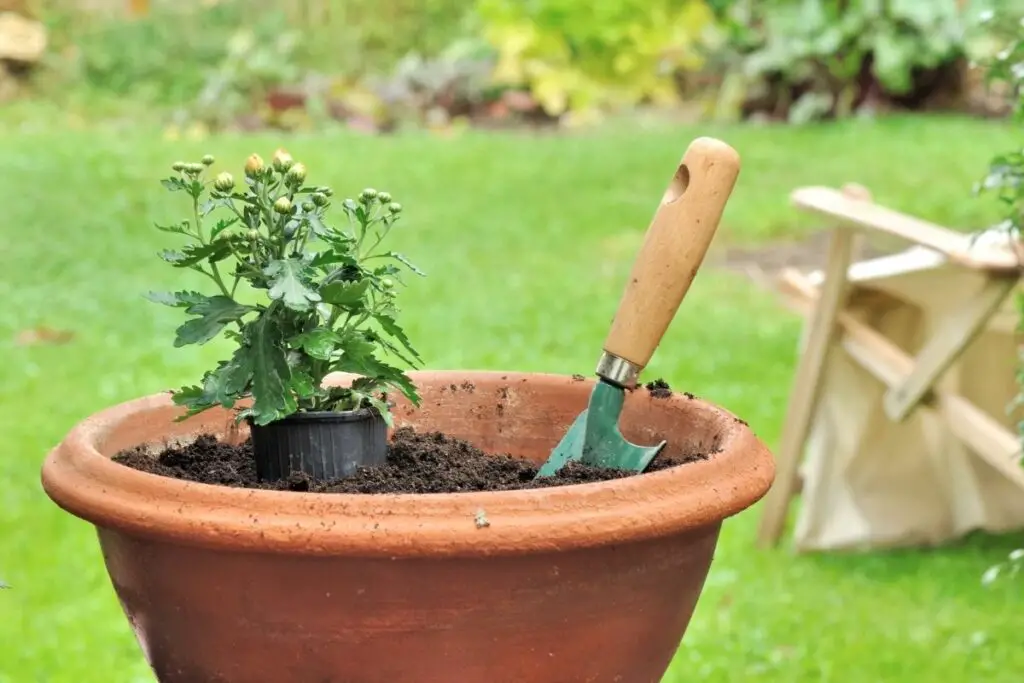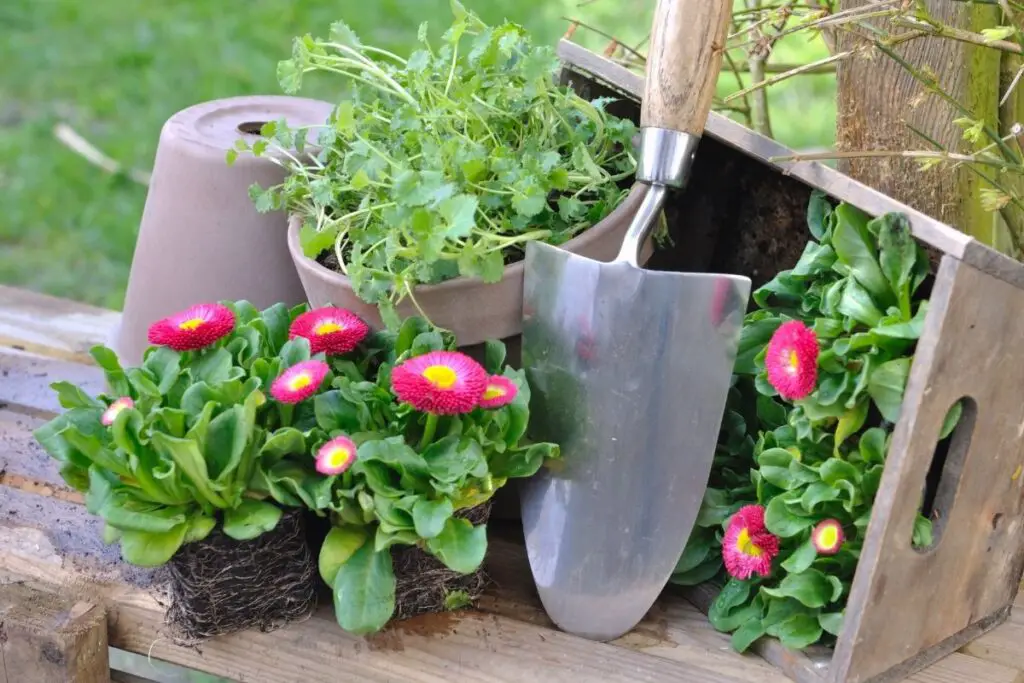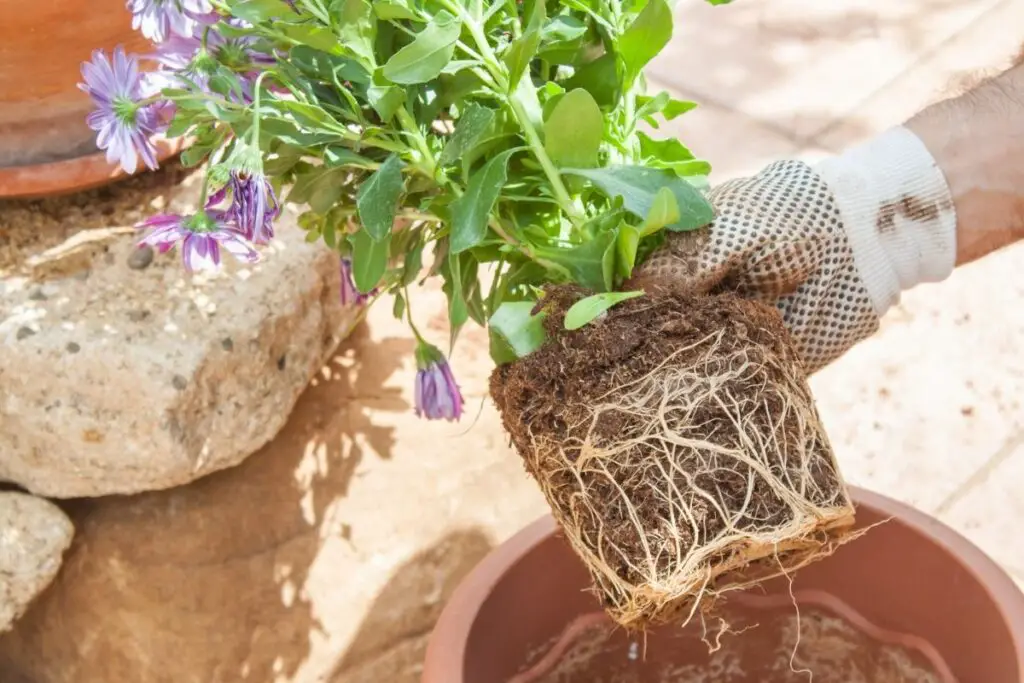One of the most critical aspects for the growth of a plant is soil, and therefore while choosing the composition of the soil, we should be mindful of the plant’s requirements. So, in this article, we shall discuss what kind of soil do daisies need and we will also check out some of the best soil mixes for your daisies.
As a general rule, you can use any well-draining and light potting soil for your daisies. If you want an ideal mix, use a mixture of organic matter like manure, compost, sand, and peat moss for best results. Daisies prefer slightly acidic soil with the pH value ranging from 6.0-8.0.
Before you plant the daisies in your garden, you will need to amend the soil in your garden. The daisies need plenty of water and fast-draining soil as we all know healthy soil means healthy roots. So, let’s dive deeper and learn more about the ideal soil mix for daisies.

Importance of making the right soil choice
Since the daisies can grow in any soil in their natural habitat but to make them bloom beautifully, we will need to take care of the composition of the soil. We are keeping in mind that they are outdoor plants, and therefore we will need to ensure that the soil is conducive enough for it to thrive.
Therefore, while selecting the soil composition, we will need to take care of the following.
- Soil should support well drainage but at the same time hold the moisture long enough to let the plant absorb the same.
- The soil should be able to provide enough nutrients to the plant.
- It should be loose enough to provide breathing space for the roots to deliver water to the entire plant.
Signs that you are using the wrong soil
If the soil composition for your daisies is not correct, the plant will show the following symptoms:
Poor growth
Suppose you see that your plant is not growing well and the growth is stunt even after watering it properly and providing adequate sunshine. In that case, you should understand that there is undoubtedly some problem with the soil composition.
Looking for gardening supplies? We have tested 100's of products before recommending them to you guys. Check out our best pick below:
| Image | Gardening Supplies | Best Price? |
|---|---|---|
 Top
Top Top
Top | Raised Garden Bed Kit | Check On Amazon |
 | XLUX Soil Moisture Meter, Plant Water Monitor, Soil Hygrometer Sensor for Gardening, Farming, Indoor and Outdoor Plants, No Batteries Required | No Results |
 Top
Top Top
Top | 82 Pcs Garden Tools Set and Extra Succulent Tools Set | Check On Amazon |
 | Joeys Garden Expandable Garden Hose with 8 Function Hose Nozzle, Lightweight Anti-Kink Flexible Garden Hoses, Extra Strength Fabric with Double Latex Core, (50 FT, Black) | No Results |
 Top
Top Top
Top | Dual Chamber Compost Tumbler | Check On Amazon |
 Top
Top Top
Top | Sunnyglade Plant Stakes | Check On Amazon |
 Top
Top Top
Top | Organic Cold Pressed Neem Seed Oil | Check On Amazon |
 Top
Top Top
Top | Mighty Mint Gallon :-Insect and Pest Control Peppermint Oil | Check On Amazon |
 Top
Top Top
Top | Scotts DiseaseEx Lawn Fungicide | Check On Amazon |
 Top
Top Top
Top | Jacks Classic 20-20-20 All Purpose Fertilizer | Check On Amazon |
 Top
Top Top
Top | 30,000 Seeds Pollinator Attracting Wildflower Mixture | Check On Amazon |
 Top
Top Top
Top | Survival Vegetable Seeds Garden Kit-Over 16,000 Seeds | Check On Amazon |
Drooping leaves
If the leaves of your plant are drooping, it means that it is either overwatered or underwatered. A wrong soil mix can make the leaves droop and wilt.
If the soil lacks enough sand, then there will be a problem with the drainage, and your plant will sit on water for a long time which can cause root rot.
Cracked or dry soil
Due to various factors, the soil in your garden can be eroded, and it can become dry and dusty, making it very difficult for the daisies to thrive. It can also cause leaves to droop and fall.
Falling leaves
If there is more clay content than sand, the soil can retain water for days which can also be a reason for the leaves to droop and fall due to root rot.
In that case, you will need to move the plant to another part of the garden where the soil is not so wet to prevent the damage caused to the roots.
What kind of soil is best for daisies?

If you plan to plant daisies in your garden, you need to ensure that the clay content in the soil is not a lot because clay can hold water for a long time which is not suitable for daisies.
Daisies require soil that drains fast as they need plenty of water and direct sunshine as well. Therefore, it is better to check the soil in your garden before planting them.
Sandy soil will give enough space to the roots to breathe, and it will hold enough moisture for the plant. This will keep the roots healthy, and the plant will thrive.
You will also need to keep in mind that daisies thrive in neutral or slightly acidic soil, and the pH value for the soil should be between 6-8 on the pH scale.
Best soil mix for daisies
You will need to prepare the soil for daisies by mixing sand with manure compost, organic matter, and peat moss. This will give an ideal growing environment for the daisies with beautiful blooms.
Let’s check out some best soil mixes for daisies that have worked like a charm for me.
#Recipe 1
This recipe can be one of the best recipes for your daisies, and it will provide enough nutrients, proper drainage, and good aeration for your plant.
Ingredients:
As we already mentioned, the soil should be a mix of organic matters, including sand, peat moss, and manure compost.
Mix:
This mix of organic matters will hold enough moisture as well as provide good drainage for the plant. This soil will also have the nutrients for the plant to grow and thrive.
#Recipe 2
The recipe including compost or fertilizer with a blend of sandy soil can also work wonders for your daisies.
Ingredients:
You can mix a good compost or well-rotted manure in the sandy soil, or add a balanced fertilizer to the soil around the plant.
Mix:
While dividing or replanting the daisies, you can add a layer of organic mulch to the soil because they tend to become woody in the center over some time. It will help them retain the required moisture for the plants.
When should I plant my daisies?
You can plant your daisies in late winter through early spring. Choose a suitable spot in your garden where the sun is beating down for the longest time.
Dig the soil six to eight inches deep and add the prepared soil mix before planting the daisies. Plant the daisies and gently pat the soil to remove air bubbles but don’t make it too firm.
Make sure that you water the plant after planting it so that the roots get enough water to adjust with the soil and absorb the moisture.
When should I divide my daisies?

Once you notice that your daisies have grown very dense (usually it takes 2 to 3 years) at the root level, then you should divide them at least 10 inches apart to give enough space for their roots to grow.
Divide your daisies in the autumn season because they are not blooming at that time. It will give their roots ample time to establish before spring.
You will need to prepare a planting spot in your garden before you split them. Dig the ground at least 8 to 10 inches. Use three to six inches of organic soil mix, and You can also use some fertilizer in a ratio of 5-10-5. (Recommended fertilizer: Epsoma garden fertilizer)
Use a shovel to divide the daisies by inserting them straight into the ground. It should be around six to eight inches from the center of the plant. Make sure that you don’t damage the roots by digging deep enough and then rock the shovel back and forth so that the roots get loosened.
Keep digging around the plant’s circumference and when you see the roots are loose, lift the daisies gently from the ground.
You can pull apart the cluster of daisies slowly with your hands, making sure each division has healthy roots as well as shoots.
For each plant division, dig a hole and add the prepared soil before you plant the daisies. Then water it profusely so that the roots are soaked.
You can also spread two to three inches of mulch around the plant, protecting the soil from drying up entirely under direct sun and retaining enough moisture for the plant.
Final Words
- Daises love the soil with good drainage, which can hold enough moisture in direct sun.
- While choosing a spot in the garden, make sure that you dig the soil and add enough sandy soil.
- Once you notice that the plants are growing dense over a while, make sure you divide them.
- You should divide your daisies every two to three years so that the plants get enough nutrients and space to grow and thrive.
- To take care of the plant, keep a check on the soil and the soil’s PH value because the soil can become acidic over time.
- If the sun is too harsh on daisies, use some organic mulch to retain moisture. It will also help the plants to thrive and bloom nicely.
- If you notice that your daisies are becoming woody and dying out in the center, then you should understand it is time to divide them by digging up the entire clump and also dispose of the woody center.
- If you notice the blooms fade away, you can deadhead the plant. It can help the plant in blooming further. It’s a normal process, so you will need to check every time it is blooming, and you will need to remove the flowers which are dying out.
- Suppose you notice that the leaves of the plant eye drooping and falling, and the soil is completely dried out or waterlogged. In such cases, you will need to check for root rot and immediately remove the plant to another position in your garden with favorable conditions.
Ref: Wikipedia, Britannica, University Of Florida, Ucanr.edu

I can’t seen to get rid of the fungus and spider like Veins on the leaves
I would suggest a few things to help get rid of the fungus and spider mites on your plant leaves:
Prune affected leaves: Remove any leaves that are severely infected with fungus or spider mites. This will prevent the spread of the problem to other parts of the plant.
Use a fungicide: A fungicide can help to control the spread of fungus on your plant. Look for a product that is labeled for use on your specific plant and follow the instructions carefully.
Use insecticidal soap: Insecticidal soap can help to control spider mites on your plant. Look for a product that is labeled for use on your specific plant and follow the instructions carefully.
Improve air circulation: Fungus and spider mites thrive in humid conditions, so improving air circulation around your plant can help to prevent the problem from becoming worse. You can do this by placing a fan near the plant or by moving it to a location with better air flow.
Water properly: Overwatering can contribute to the growth of fungus on your plant. Make sure you are watering your plant properly by allowing the soil to dry out slightly between waterings.